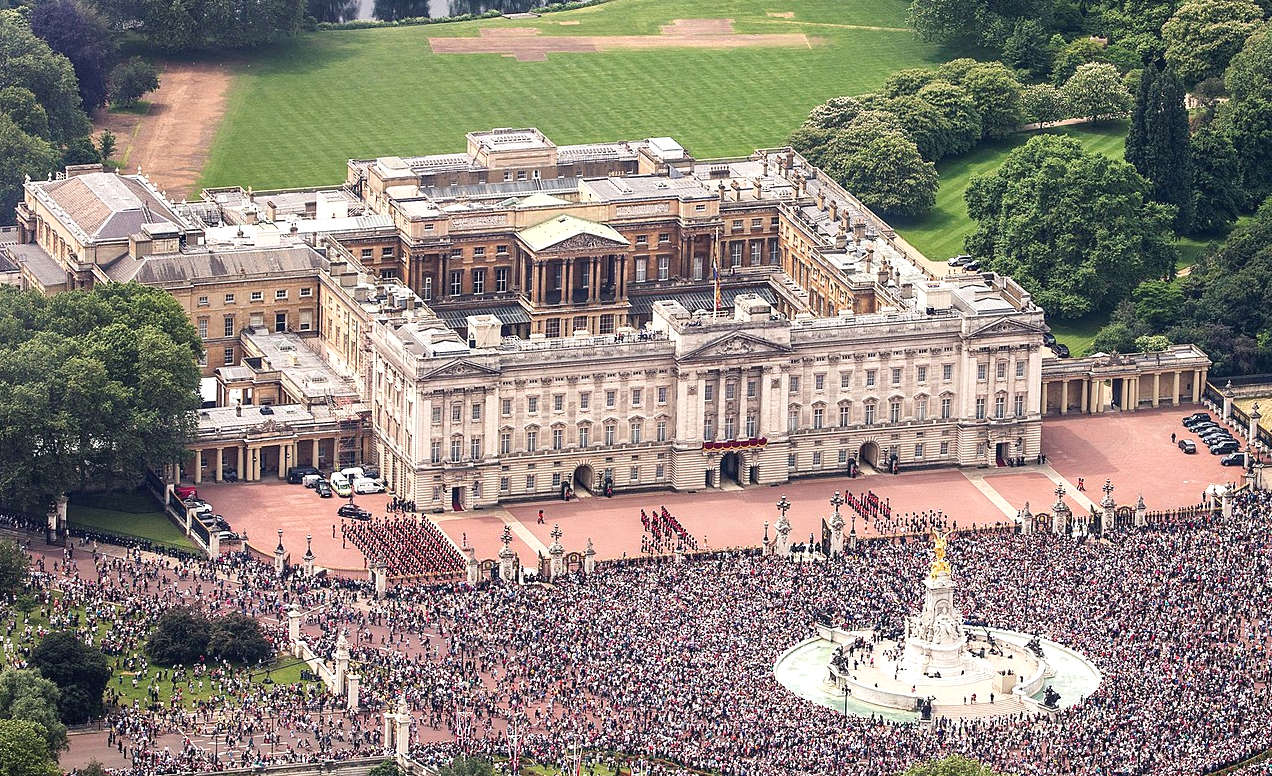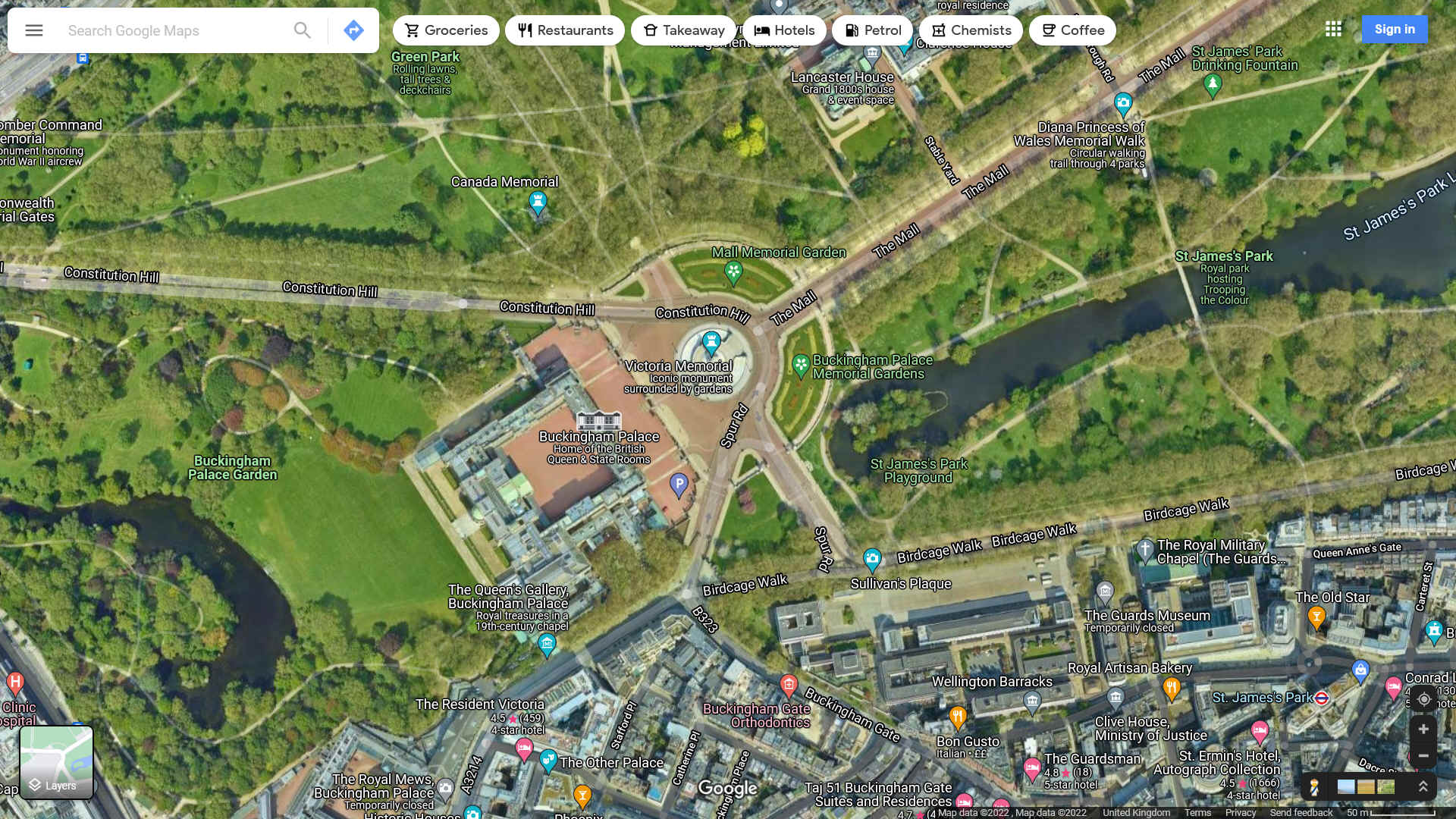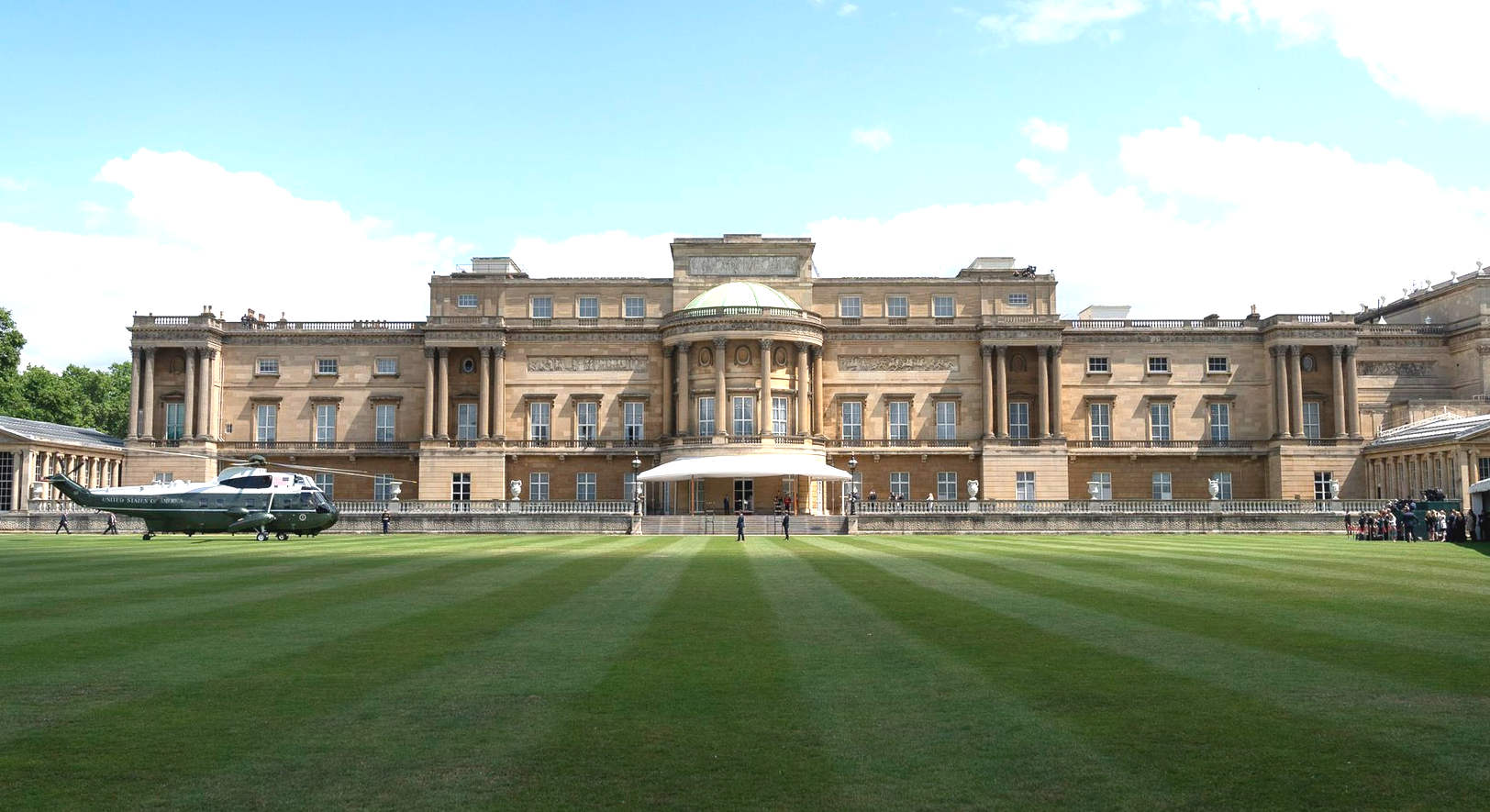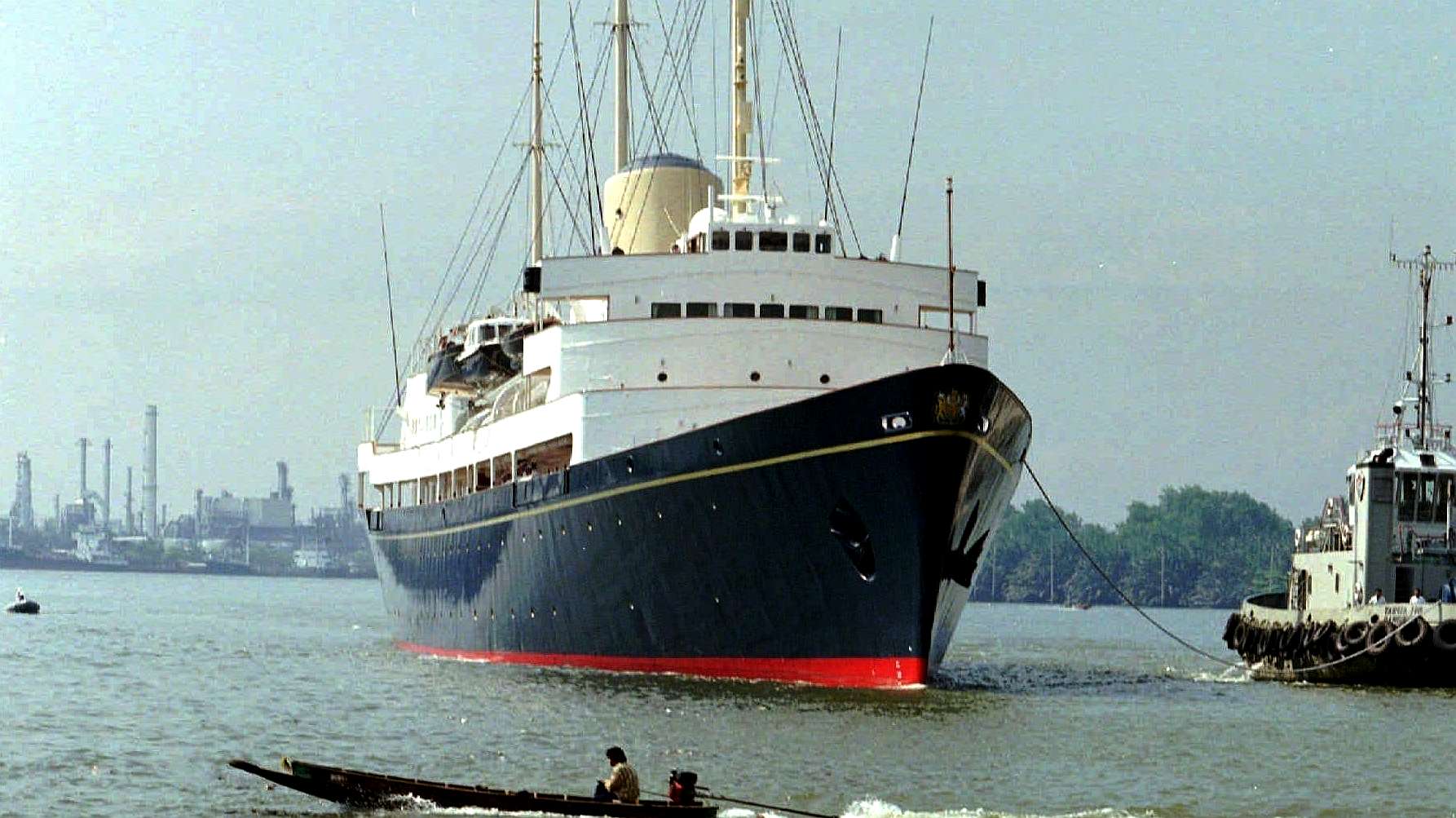|
BUCKINGHAM PALACE
|
|
The Royal Family's administrative centre is in the City of London, Capital of England and the United Kingdom, is built in a castle like formation with a courtyard and covered walkways. Some of the architecture is very Romanesque.
Buckingham Palace is the London residence and administrative headquarters of the monarch of the
United
Kingdom. Located in the City of Westminster, the palace is often at the centre of state occasions and royal hospitality. It has been a focal point for the British people at times of national rejoicing and mourning.
The last major structural additions were made in the late 19th and early 20th centuries, including the East Front, which contains the well-known balcony on which the British royal family traditionally congregates to greet crowds. A German bomb destroyed the palace chapel during the
Second World
War; the Queen's Gallery was built on the site and opened to the public in 1962 to exhibit works of art from the Royal Collection.
It's easy to see where the Whitehouse architects got some of their inspiration from. Right down to the impromptu helicopter pad on the lawn.
THE
ROYALS AFLOAT - A floating [gin] palace. 83rd in a long line of royal yachts that stretches back to 1660 and the reign of Charles II, BRITANNIA holds a proud place in British maritime history. Plans to build a new royal yacht to replace the VICTORIA AND ALBERT III began during the reign of King George VI. But The King died in 1952, four months before the keel of the yacht was laid. His daughter, Princess Elizabeth, succeeded him to the throne and the new Queen, together with her husband, Prince Philip, took a guiding hand in the design of the yacht, personally approving plans prepared by Sir Hugh
Casson, Consultant Architect and selecting furniture, fabrics and paintings.
If there is ever another Royal Yacht, one hopes it might be solar assisted and hydrogen powered, by way of an eco ship, to reduce the carbon footprint of the super rich.
LINKS & REFERENCE
https://www.
|
|
|
|



